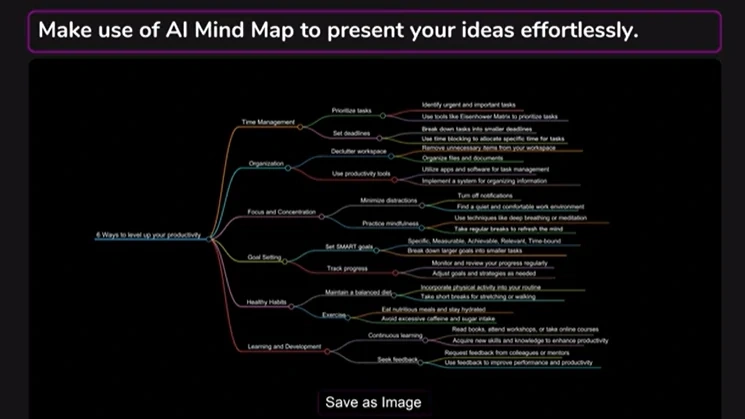
In the realm of presentations, capturing and maintaining your audience's attention is a perpetual challenge. PowerPoint, a ubiquitous tool for creating and delivering presentations, offers a powerful feature that can significantly enhance the visual appeal and flow of your slides – transitions. In this guide, we will explore the definition of PowerPoint transitions, delve into the benefits they bring to presentations, provide practical how-to guides for seamless implementation, and conclude with insights on how mastering transition tactics can elevate your overall presentation skills.
Definition
PowerPoint transitions refer to the animations and effects applied to the movement between slides in a presentation. They serve as a bridge between different sections of your content, adding a layer of sophistication to the overall delivery. Transitions can range from subtle fades and slides to more dynamic effects such as flips, spins, or cascading movements. The primary goal is to create a smooth and visually engaging journey for your audience as they progress through your presentation.
Benefits
Understanding the advantages of incorporating transitions into your presentation toolkit is crucial for leveraging their impact. Here are some key benefits:
Engagement: Transitions capture attention and maintain audience engagement by adding a dynamic element to your presentation. They create a sense of anticipation as viewers move from one point to the next.
Visual Flow: Well-chosen transitions contribute to the overall visual flow of your presentation. They help guide the audience's focus, signaling transitions between topics or emphasizing key points in a seamless manner.
Professionalism: Thoughtful and intentional use of transitions can convey a sense of professionalism. It shows that you've invested time in refining the visual aspects of your presentation, contributing to a polished and sophisticated delivery.
Emphasis on Key Points: Transitions can be strategically employed to draw attention to specific elements or key messages. Whether you want to reveal data gradually or emphasize a particular quote, transitions provide a tool for intentional emphasis.
Narrative Enhancement: Just as transitions are used in storytelling to connect scenes, they can enhance the narrative of your presentation. By creating a cohesive visual story, transitions contribute to a more memorable and impactful experience for your audience.

How-to Guides
Now that we've established the benefits of PowerPoint transitions, let's dive into practical how-to guides for incorporating them effectively into your presentations:
Selecting the Right Transition:
In PowerPoint, navigate to the "Transitions" tab. Here, you'll find a variety of transition options. Consider the tone and content of your presentation when choosing a transition. Subtle fades or slides may be appropriate for professional settings, while more dynamic transitions can add flair to creative presentations.
Applying Transitions to Individual Slides:
Click on the slide where you want to apply a transition, choose the desired transition from the menu, and set the speed of the transition if applicable. Use the "Apply to All" option to ensure consistency across your presentation or customize transitions for each slide.
Timing and Delay:
Customize the timing of your transitions to synchronize with your narrative. Adjust the duration of the transition and add delays if you want specific elements on a slide to appear at different times. This level of control allows you to orchestrate a well-timed and captivating presentation.
Previewing Transitions:
Before finalizing your presentation, use the "Preview" button to see how transitions flow between slides. This step helps you identify any adjustments needed for a seamless and polished delivery.
Avoiding Overuse:
While transitions can enhance your presentation, avoid overloading your slides with excessive animations. Too many transitions can become distracting and detract from the substance of your content. Use transitions selectively to complement your message.
Elevating Presentations: Smallppt's AI PowerPoint Unleashed
Smallppt's AI PowerPoint, a revolutionary AI PowerPoint maker, reshapes presentation design. This online AI PowerPoint maker crafts captivating presentations with ease. The Redraw Feature refines text precisely, while real-time formatting recommendations from its Artificial Intelligence presentation PowerPoint suite enhance design elements. Integrated with Microsoft PowerPoint, it prioritizes efficiency, allowing focus on substantive content. As a leader in the AI for presentations movement, it blends traditional design strengths with cutting-edge AI capabilities.
Conclusion
In conclusion, mastering transition tactics in PowerPoint is a valuable skill that can elevate the impact of your presentations. From defining transitions and understanding their benefits to providing practical how-to guides, this guide equips you with the knowledge to use transitions effectively and strategically.
Remember, transitions should serve as enhancers, not distractions. When applied thoughtfully, they contribute to a cohesive and engaging presentation that resonates with your audience. So, the next time you craft a presentation, consider the power of transition tactics to transform your slides into a dynamic and visually compelling storytelling experience. Elevate your presentations with the strategic use of PowerPoint transitions, and watch as your audience becomes more captivated by your message.

